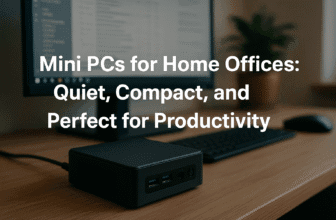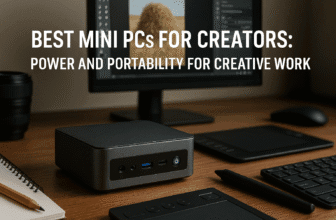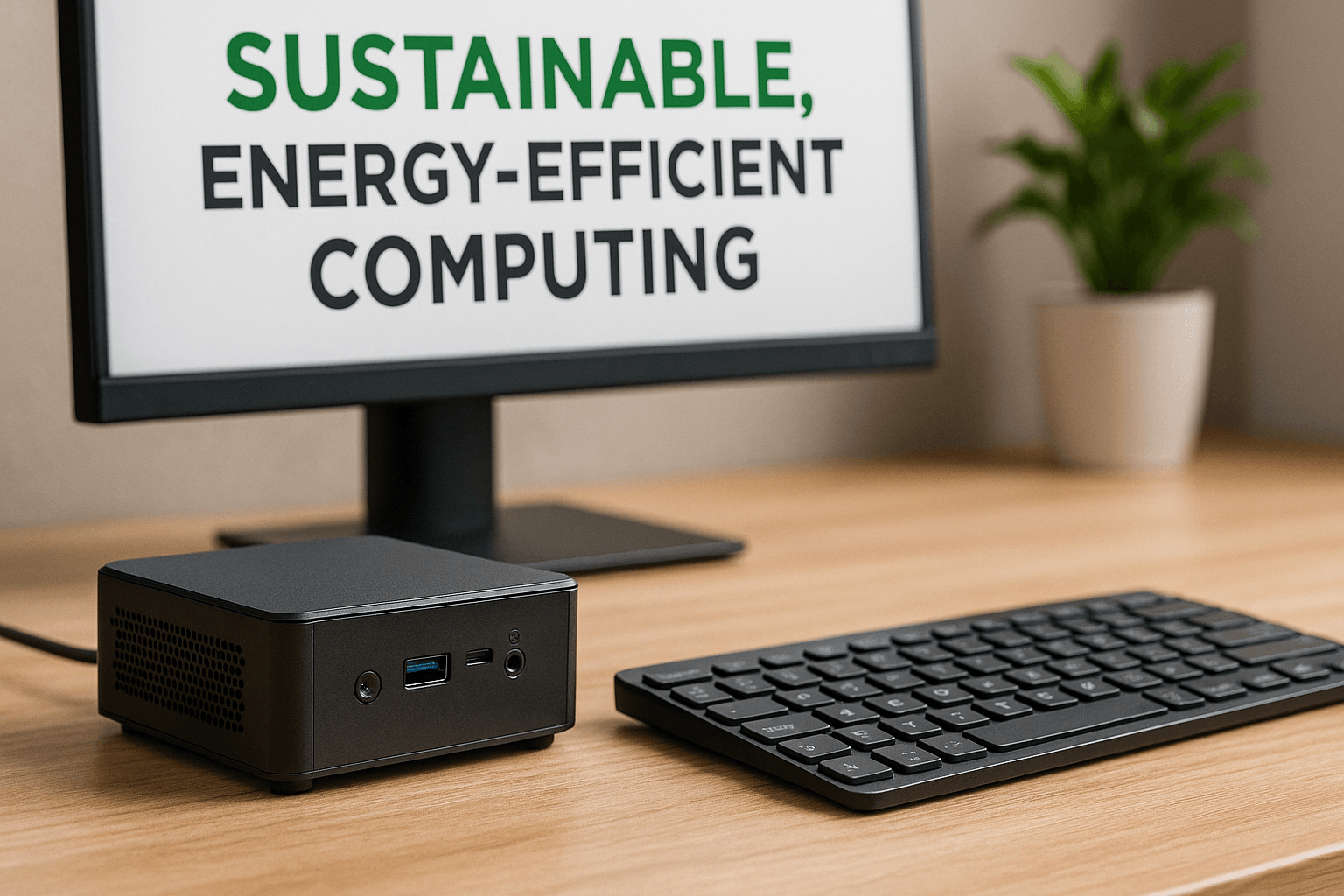
How Mini PCs Support Sustainable, Energy-Efficient Computing
Introduction: Sustainability Meets High-Performance Technology
In 2025, sustainability is no longer optional—it’s a core requirement in both personal technology use and corporate IT strategies. As climate change intensifies, the environmental impact of digital infrastructure has become a growing concern. Businesses, governments, and individuals alike are under pressure to reduce energy consumption, minimize e-waste, and support greener operations.
That’s where mini PCs come in.
Once seen as niche alternatives to full-sized desktops, mini PCs have evolved into powerful, energy-efficient machines that rival traditional workstations in performance—while leaving a much smaller environmental footprint. In this article, we’ll explore how mini PCs are revolutionizing sustainable computing in 2025 and why they’re the go-to choice for eco-conscious consumers and businesses.
1. The Growing Environmental Cost of Traditional Computers
Desktop PCs and gaming rigs have long been associated with raw power—but they also come with significant downsides from an environmental perspective:
- High Power Consumption: Desktops can draw between 300 to 500 watts or more, depending on the build. Multiply that by thousands of units in corporate environments, and you have a massive energy burden.
- Large Material Footprint: The components required to build a tower—including larger motherboards, power supplies, and cooling systems—require more raw materials and energy to produce.
- Shorter Upgrade Cycles: As technology advances, bulky desktops often require full replacements rather than modular upgrades, contributing to electronic waste.
Mini PCs offer a smarter, leaner alternative.
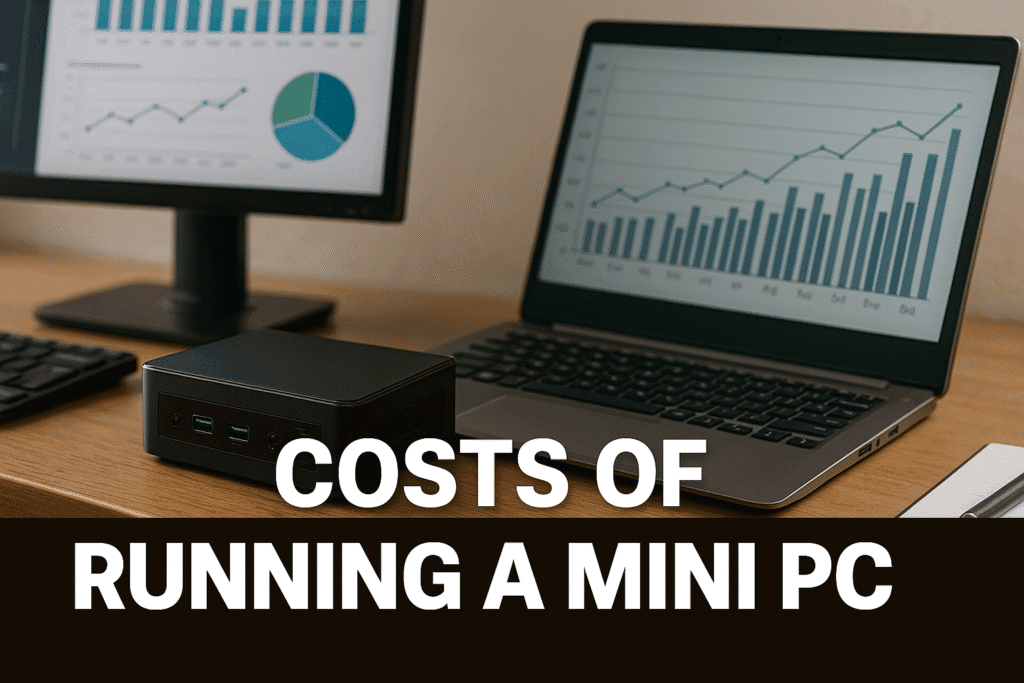
2. How Mini PCs Champion Energy Efficiency
Mini PCs are designed to do more with less—less space, less power, and fewer materials. In terms of energy usage, the difference is striking.
Power Consumption Comparison
| Device Type | Typical Power Draw | Yearly Energy Use | Est. Annual Cost (USA) |
|---|---|---|---|
| Traditional Desktop | 300–500W | 1,200–2,000 kWh | $180–$300 |
| High-Performance Laptop | 65–150W | 400–600 kWh | $60–$90 |
| Mini PC | 60–90W | 200–350 kWh | $30–$55 |
Conclusion: Switching to mini PCs can reduce energy usage by over 75%—especially in enterprise environments with dozens or hundreds of machines.
3. Why Mini PCs Are Inherently More Sustainable
Mini PCs are not only energy savers—they also score high on lifecycle sustainability.
✅ Compact Form Factor = Fewer Materials
Smaller components mean less plastic, metal, and silicon are required during manufacturing. Their lightweight nature also means:
- Lower emissions during shipping.
- Reduced packaging materials.
- Smaller storage and deployment footprints in office settings.
✅ Extended Hardware Lifespan
Because mini PCs generate less heat, internal components are subject to less thermal stress. As a result:
- CPUs and GPUs last longer.
- Cooling systems require less maintenance.
- Failure rates for power supplies and motherboards are lower.
✅ Easier Recycling
Mini PCs are easier to disassemble and recycle than desktops or even many laptops. Their modular design allows certified recyclers to recover valuable metals and components more efficiently.

4. Leading Sustainability Certifications in 2025
When selecting a mini PC in 2025, look for environmental certifications that verify energy efficiency and sustainable production practices:
🌿 ENERGY STAR®
Indicates that the PC meets strict power-efficiency standards, including idle and sleep modes.
🌿 EPEAT (Electronic Product Environmental Assessment Tool)
Gold or Silver ratings denote compliance with multiple sustainability criteria, including:
- Responsible material sourcing
- Design for longevity and recyclability
- Low energy use throughout lifecycle
🌿 RoHS Compliance
RoHS (Restriction of Hazardous Substances) ensures that no toxic materials like mercury or cadmium are used in the device’s construction.
5. Mini PCs at Work: Reducing Environmental Impact at Scale
Remote and Hybrid Work Environments
Mini PCs are perfect for at-home workstations:
- Quiet operation with fanless models available.
- Ultra-low power draw makes them ideal for solar-powered or battery-based offices.
- Take up less room on desks and shelves, supporting ergonomic and minimalist setups.
Office Deployments
In modern workspaces, mini PCs:
- Reduce cooling demands (less AC use).
- Lower overall electricity loads per floor or department.
- Fit behind monitors or under desks, improving airflow and workspace organization.
Enterprise Example: A global tech firm replaced 1,000 desktop PCs with mini PCs and reduced its annual power bill by over $100,000 while cutting emissions by 400 metric tons.
6. How Mini PCs Help Reduce E-Waste
One of the biggest contributors to digital pollution is electronic waste. Mini PCs can combat this in several ways:
🔁 Modular Upgrades Over Replacements
Unlike most modern laptops, which are sealed and difficult to upgrade:
- Mini PCs often allow RAM and SSD upgrades.
- Some support external GPU (eGPU) enclosures for future graphics power boosts.
- Firmware and BIOS updates keep systems current without replacing hardware.
♻️ Long-Term Use with OS Optimization
Mini PCs handle Linux, ChromeOS Flex, and lightweight operating systems beautifully. Many businesses use older mini PCs for:
- Digital signage
- Terminal kiosks
- Network servers
- Edge computing
This reusability keeps devices out of landfills and extends ROI well beyond typical 3–5 year lifespans.

7. Green Mini PC Models Leading the Way in 2025
| Brand & Model | Processor | Notable Sustainability Features | Estimated Power Draw |
|---|---|---|---|
| Intel NUC 13 Pro | Intel i7-13700H | ENERGY STAR®, compact chassis, modular RAM/SSD | ~80W |
| Apple Mac Mini M3 | Apple M3 SoC | Fanless design, high performance per watt ratio | ~60W |
| Beelink GTR7 Pro | AMD Ryzen 9 7940HS | Lightweight build, recyclable packaging | ~75W |
| ASUS PN64-E1 | Intel i9-13900H | RoHS compliant, whisper-quiet cooling | ~85W |
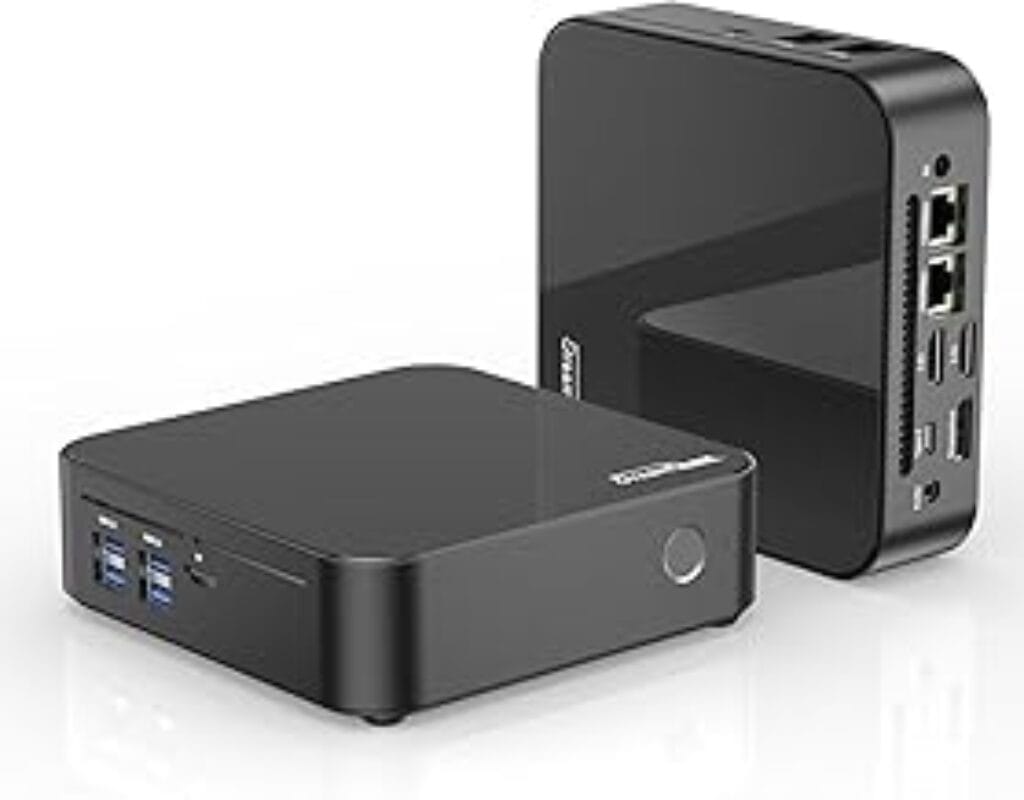
Shop Mini PC’s on Amazon
8. Mini PCs and Renewable Energy: The Perfect Match
Mini PCs are uniquely suited for low-power environments powered by:
- Solar panels
- Portable battery banks
- Microgrids
Their low power draw allows users to:
- Run workstations entirely off solar energy.
- Reduce load on UPS (uninterruptible power supplies) for critical environments.
- Extend the battery life of portable setups in off-grid locations.
For digital nomads, rural workers, and eco-conscious users, this is a game-changer.

9. Eco-Friendly Practices for Mini PC Owners
Even with an efficient machine, how you use your mini PC matters. Consider these tips for minimizing environmental impact:
- Enable Auto Sleep Settings: Shut down or sleep after 10–15 minutes of inactivity.
- Turn Off Peripherals When Idle: Use smart plugs or USB hubs with switches.
- Use Energy-Efficient Monitors: Pair your PC with LED-backlit or OLED displays.
- Upgrade Instead of Replacing: Boost RAM or SSD instead of buying new.
- Recycle Responsibly: Use certified e-waste recycling services for end-of-life components.
10. Future Outlook: How Mini PCs Align with the Next Generation of Green Tech
Mini PCs are just the beginning. As technology advances, expect to see:
- Fanless designs powered entirely by renewable energy.
- AI-optimized energy management that adjusts processing based on usage.
- Modular mini PC kits for DIY repairs and sustainability.
Their compatibility with solar, low-energy software environments, and modular hardware design positions them as future-proof tools in the growing green tech ecosystem.
Final Thoughts: A Smarter Way to Compute
In a world where every watt counts and every upgrade decision carries environmental weight, mini PCs offer a powerful way to balance performance with purpose. Whether you’re running a business, building a studio, or managing a home office, choosing a mini PC isn’t just a tech decision—it’s a step toward a more sustainable digital future.
👉 Call to Action: Ready to green your workspace? Explore the most energy-efficient and eco-friendly mini PCs of 2025 and reduce your environmental footprint—without sacrificing productivity.

I am a USMC Veteran who worked with a Lot of computers and Technology while I was in. I became hooked and learned a lot in my 20 years.
At my store, I am passionate about bringing you the latest tech products that enhance your everyday life. Our mission is to provide quality, innovation, and value, making sure you find the perfect gadgets to fit your needs. Thanks for Your Support.. Larry Mac



